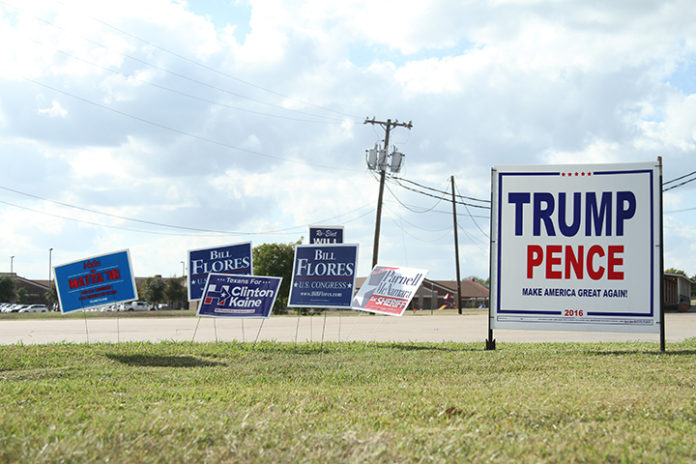
By Megan Rule | Staff Writer
With the election season behind us, the wave of commercials, yard signs and social media posts are gone until it is time to prepare for the next cycle. Especially in the case of presidential elections, candidates pump millions of dollars into their advertising, but why?
“I think advertising has an effect. Sometimes it doesn’t do very good, and sometimes you can’t go without it. It’s a marginal advantage that pushes you over,” said Gary Bezella, president of Cross and Oberlie, a manufacturer of political signs and promotional campaign products. “Social media is big, and yard signs are there 24 hours a day and have an impact.”
According to a recent article in The Atlantic, some of the most expensive campaigns, though professional, proved ineffective. Sen. Ted Cruz’s campaign spent nearly $6 million on analyzing personality profiles alone, while Dr. Ben Carson’s campaign spent $78 million and Jeb Bush’s campaign spent a whopping $139 million and then dropped out after the South Carolina primary.
Dr. Marlene Neill, assistant professor in the department of journalism, public relations and new media at Baylor, said in smaller, local elections, simple name recognition plays a huge role. The value in advertising can come from seeing a name over and over so that when a citizen gets to the point of voting, they have that recognition. Seeing a sign in the yard of someone respected, Neill said, can also be a persuasive tool. Neill said studies show the best persuasion comes from family and friends – the people we surround ourselves with.
“Part of that is just building awareness because, particularly with some of the races, you may have some candidates locally that may not be as well known, so of course advertising is great for creating awareness so people can recognize the names,” Neill said. “It is said with candidates just even if you recognize a name, sometimes that will encourage you to vote for them as opposed to a name you don’t recognize.”
Research on social media trends has shown that citizens are influenced by candidates’ social media and sponsored posts, and strong opinions can lead to un-following and un-friending. Social media, combined with advertising, helps to reach the apathetic voters that aren’t as involved because name recognition and headline sharing make them more aware, Neill said.
An article from the Washington State University Journal of Marketing Communications reported that, “Under normal circumstances high voter involvement and high candidate credibility are likely to engender support for a candidate who uses negative political advertising.” An incredibly effective form of advertising is negative advertising, as it increases the intent to vote and the feelings for candidates.
“While people say they don’t like negative advertising, it does tend to impact the way that people evaluate candidates,” Neill said. “As much as we express our dislike for it, that’s why it is continually used is because of the fact that it can be effective.”





